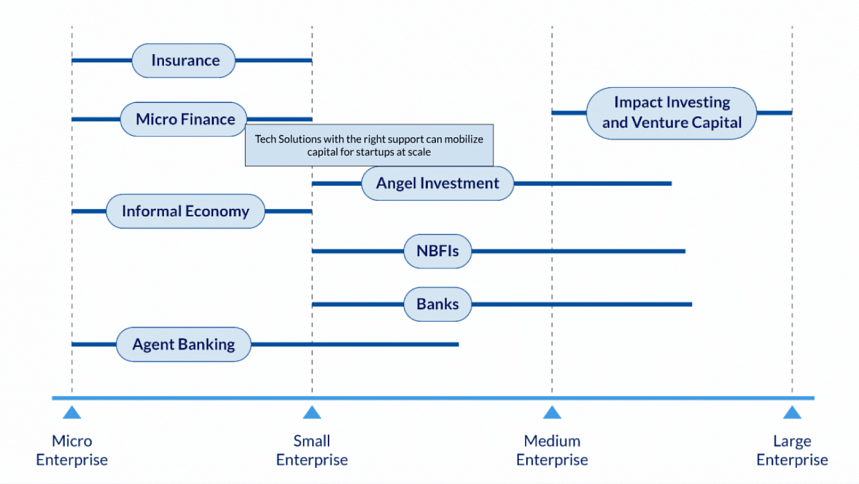How innovation in technology and instruments can solve access to capital for small businesses

Access to affordable capital has consistently been cited as one of the top three challenges by the more than 2,500 micro and small business entrepreneurs I have met in Bangladesh over the last ten years. For a country where you have 60 banks, 35 non-bank financial institutions (NBFIs) and 760 microfinance organisations (MFIs) - this is unfortunate. So where does this gap originate?
The issue is often attributed to the high operating costs associated with the physical branch networks that MFIs must maintain for disbursing, monitoring, and collecting loans. Additionally, there is a lack of appropriate product development, with short-term loans that are structured with monthly repayments, which often do not align with the cash flow cycles of small businesses. Moreover, the absence of a comprehensive credit bureau, one that includes small business profiles and draws data from diverse sources further exacerbates the problem.

This is where innovation in technology and financial instruments can play a pivotal role:
- Data to Credit Bridge: Technology enables us to capture and process data at unprecedented volumes and speeds. However, this requires three key elements: a) Have data digitised at scale starting from microfinance to payments b) Willingness and a framework to share data among MFIs, banks, NBFIs and other potential data sources like Telcos and c) Interoperability across platforms.
Imagine the possibilities if these were in place. A borrower who has taken a loan from MFI A could grant permission for that data to be automatically shared with Bank B, which could then access that information, along with data from other sources, to underwrite a new loan. With the right algorithms, the system could generate personalised product recommendations and also serve as a marketing funnel, given that other aspects of the user journey and transactions are digitised.
- Blended Financial Instruments: This technological solution is only effective if the financial instruments available to small businesses are appropriately designed. For example, micro-entrepreneurs in agriculture often take microfinance loans to purchase farm animals or agricultural inputs. However, they are frequently required to begin monthly repayments immediately, even though they may only receive liquidity at the end of the harvest period or after selling the farm animal at the end of the season. This maturity mismatch complicates product uptake. Moreover, small entrepreneurs often require additional support and value-added services, such as management guidance and access to markets.
A blended finance pool, consisting of various investors and financial instruments, could provide significant value. By ensuring transparency and allocating grants, equity, convertible notes, and debt according to the cost-income profile of the business at different stages, small enterprises can be supported in their journey to becoming larger businesses.
- Safe Space to Experiment: These innovations will only be effective if regulations are simplified and adequate sandboxes are created to allow for quick product launches and experimentation. For example, the establishment of a credit bureau that collects data from multiple sources and grants access to various financial institutions, or the development of frameworks that incentivise data sharing while protecting individual privacy, would likely require public-private partnerships. Enabling these innovations to flourish and ensuring a fair playing field for fintech companies will be crucial.
Technology has the potential to lower distribution and operating costs, thereby allowing micro and small businesses to access credit at affordable rates. However, the right infrastructure must be in place, and we must ensure that everyone has a fair opportunity to participate in this new ecosystem.
Bijon Islam is CEO of LightCastle Partners and works closely with development partners, corporates, and small businesses to create inclusive economic growth.

 For all latest news, follow The Daily Star's Google News channel.
For all latest news, follow The Daily Star's Google News channel. 



Comments